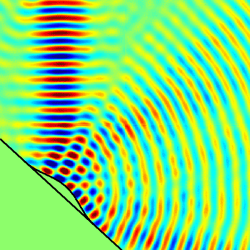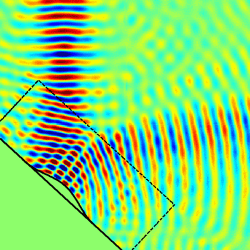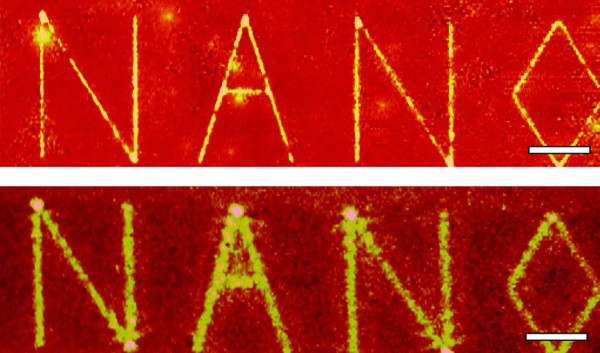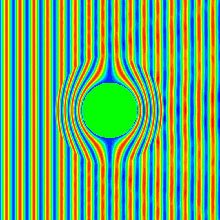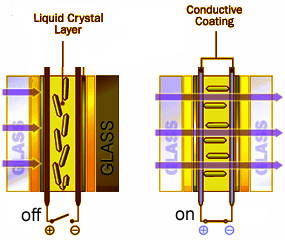2010 F
metadome
Description | Metamaterials | Control Loop | Proposed Site | Gallery | References | Team
Artificial materials that exhibit properties which may not be readily available in nature. Three groups of metamaterials can be found in metadome: electromagnetic, acoustic and seismic metamaterials. In addition, we use modern materials that are not metamaterials by the structure, yet provide unique novel properties.
These materials impact the way electromagnetic waves travel through the substance. Electromagnetic cloak, a cover that will render certain objects in the dome invisible, was suggested as one of the first metamaterial applications. In metadome, for the strongest effect, cloaked objects should be noticeable with some other sense: i.e. the audience should still be able to touch, hear the object. |
|
||||
Another aspect of unnatural electromagnetic wave propagation can be observed at the contact surface between two different materials, where one of them is electromagnetic metamaterial. Negative refraction breaks light waves reversely to the standard physics postulates. Effects such as the one seen in the figure on the right can be achieved with appropriately designed metamaterials. |
|
||||
Superlens is a metamaterial-powered microscope that defies the diffraction limit and delivers image resolutions beyond those conventional microscopes can deliver. In metadome the superlens enables participants to explore yet unseen objects. The images generated by the microscope are also displayed on certain parts of the dome. |
|
These materials are influencing the way mechanical waves travel. They are specifically designed with seismic waves in mind. The seismic cloak can protect structures from the destructive effect of eathquakes by guiding the mechanical waves around the building it protects. In metadome we harness the seismic cloak in two ways. First we deploy patches of the seismic cloak and artificially generate controlled ground movement within the dome. The participants can then decide if they want to experience the quake or to stay on the firm, cloak-protected surface. The experiment can provide the information about how people find the balance between safety and curiosity. Second, we engineer the seismic cloak around metadome, effectively protecting it from possible earthquakes. |
|
Using acoustic metamaterials, the directions of sound through the medium can be controlled. In metadome we use acoustic metamaterials to guide sound wave within the dome and even cloak certain matters from acoustic detection. This can render some walls of the dome "deaf". We also produce the reverse Doppler effect, where the pitch of the sound is changed counterintuitively to the standard physics. We coordinate the reverse Doppler experience with situations where people expect the Doppler effect. For example driving through the dome.
Active Smart Glass. In metadome, liquid crystal active smart glass is utilized for the top half of the entire structure. Liquid crystal metaglass uses crystals sandwiched in between two layers of conductive coating on glass as a means of controlling translucency.When no electrical charge is applied to the conductive coating, the crystals in the film diffuse light and the glass is translucent; when an electrical charge is applied the crystals become oriented and the glass becomes transparent. Any degree of translucency is possible by means of voltage control. The basic principle of this type of smart glass is illustrated in the figure: |
|
